See also: Glyph coverage by standard.
This page shows the glyph coverage for various popular academic fonts.
Fonts were selected based on recomendations on various sites, or for having wide glyph coverage, particularly in mathematics and historical languages.
The focus is on western academia, so I did not consider CJK-and-related coverage. Font styles are typically "classical" serif, with a few sans-serifs. Arial is included, but not Calibri, due to its peculiarities. Neither is really recommended for serious publications.
The "defining features" of a font are usually in how certain letters are drawn, in particular capitals A C E G I J K M O Q R S W, lowercase a e g i j l o y, some punctuation like ? , . (&), and the numerals. These are highlighted in the custom sentence, which also gives a feel for the "darkness" of the font, and its typical kerning. "Smirnoff" highlights issues with r n looking like m, and how ff renders.
You could also check the full Kurinto fonts collection (some included here), and the TypoPro collection. The Kurinto fonts are based on and extend popular free fonts like Arimo, Kelvinch, Cardo, Carlito, Noto Sans, Fira Sans, Junicode, Libertinus Sans, Tinos, Charis SIL, and Courier Prime.
The mapping from these popular fonts to Kurinto is
| Original font | Kurinto expanded font |
|---|---|
| Arimo | Kurinto Aria |
| Cardo | Kurinto Book, Kurinto Book UFI |
| Carlito | Kurinto Cali |
| Charis SIL | Kurinto Text Music |
| Courier Prime, CNew | Kurinto Type |
| Fira Sans | Kurinto Plot Bold |
| Junicode | Kurinto Roma UFI |
| Kelvinch | Kurinto Arte |
| Libertinus Sans | Kurinto Seri |
| Noto Sans | Kurinto Sans Music |
| Noto Sans Mono | Kurinto Mono |
| Tinos | Kurinto TMod |
I have included Arial, Helvetica, Segoe UI Symbol and Times New Roman, since they are so pervasive. I did not include the usual Latex fonts because they are getting old and their glyph coverage is not keeping up.
In 2024 I added three of the Go Noto universal fonts which are fonts made by combining selected separate Noto fonts. There is some overlap with Kurinto Sans Music listed above, but the Europe Americas version has almost complete coverage of the Unicode blocks in my academic selections.
The coverage for the three fonts is
| Font | Unicode blocks | Characters | Glyphs |
|---|---|---|---|
| Go Noto Current | 197 | 32804 | 61207 |
| Go Noto Ancient | 178 | 24556 | 32971 |
| Go Noto Europe Americas | 120 | 13391 | 53393 |
| Upstream font | Unicode blocks | Characters | Glyphs |
|---|---|---|---|
| Noto Sans | 37 | 2840 | 3748 |
| Noto Sans Math | 22 | 2472 | 2655 |
| Noto Music | 7 | 561 | 581 |
| Noto Sans Symbols | 15 | 840 | 1218 |
| Noto Sans Symbols 2 | 37 | 2655 | 2674 |
| Total | 111 | 9368 | 10876 |
Not all of these fonts are suited for your main text, especially the monospace ones. I have included them because there are particular use cases where they could be appropriate.
Ideally you would want a font that also had bold and italic variants. However, fonts with wide glyph support often only come in a regular weight. To be fair to these, the samples below relied on LibreOffice and the OS font engine to do the bold and italic variations, rather than from dedicated fonts, which are usually not installed.
The text samples were made in LibreOffice, and then screenshotted (?). Attempts to do it all programmatically and via Latex failed due to issues with PHP and Latex.
First are sample images of each font, and abbreviation for the column headings in the table below.
Font size for the letterforms is 28pt, while the sentences are 12pt.
The user-selectable glyph coverage tables are below.
We also have the Google Fonts collection as at 11 April 2022 analysed according to these criteria, as a spreadsheet (.ods).
| Serif | Sans serif | Mono / semi-Mono |
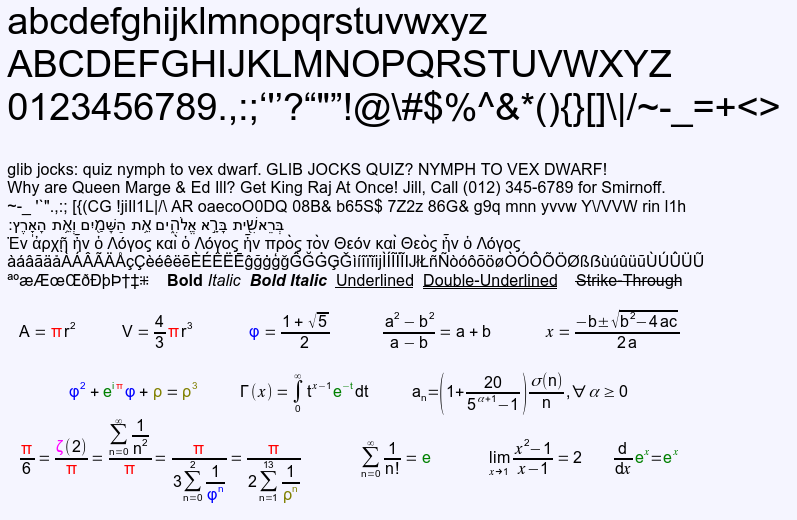
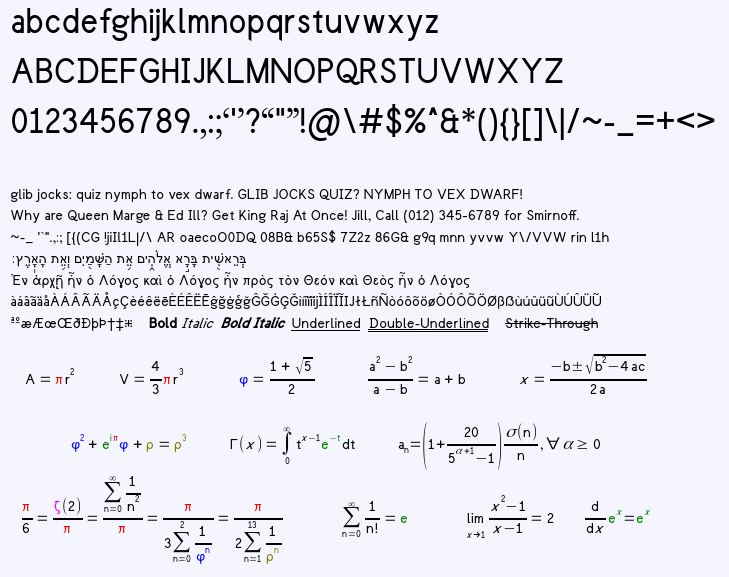


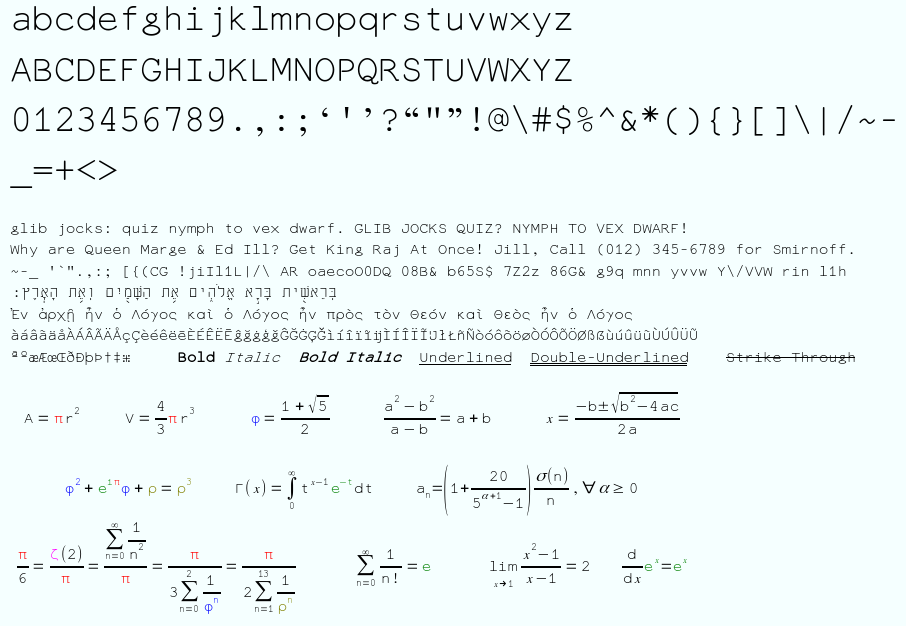
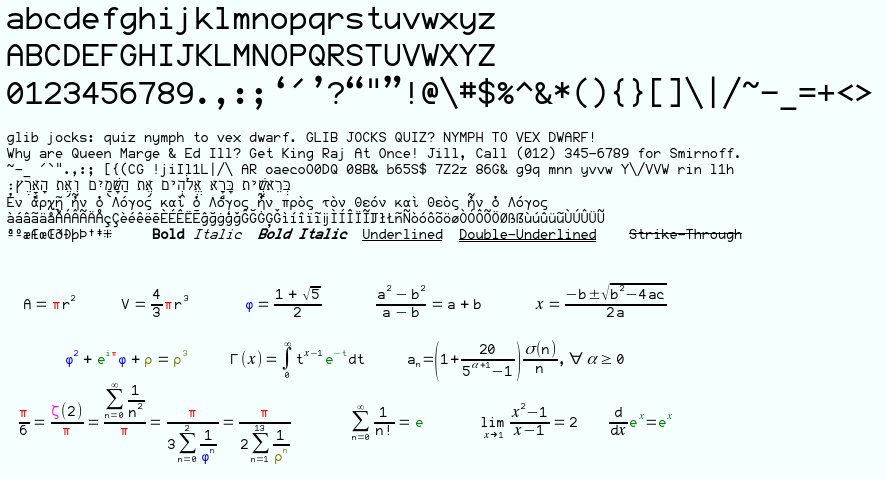
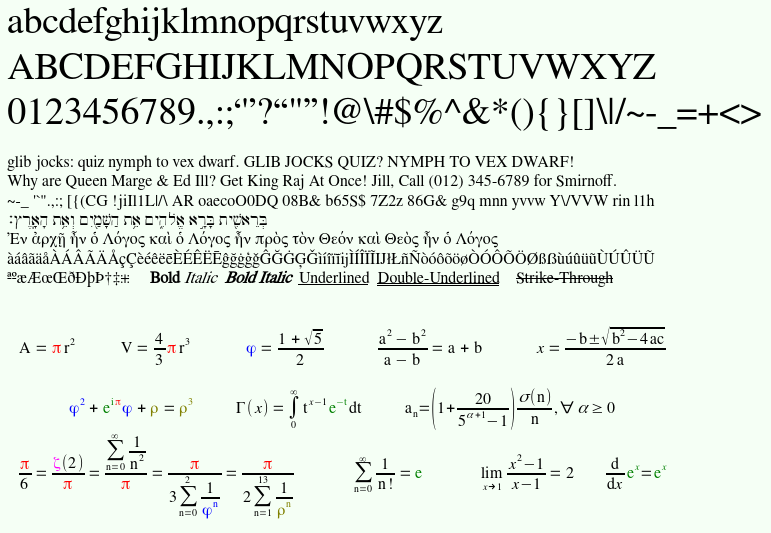
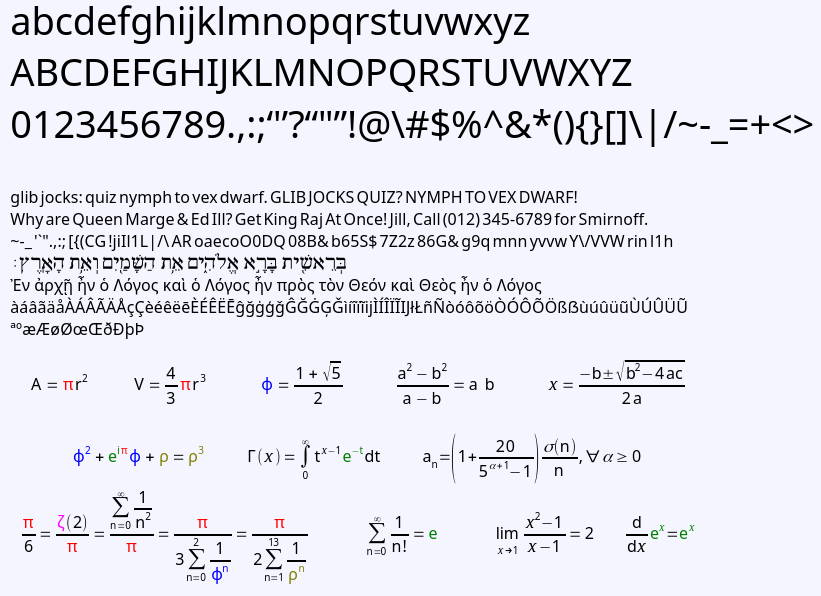
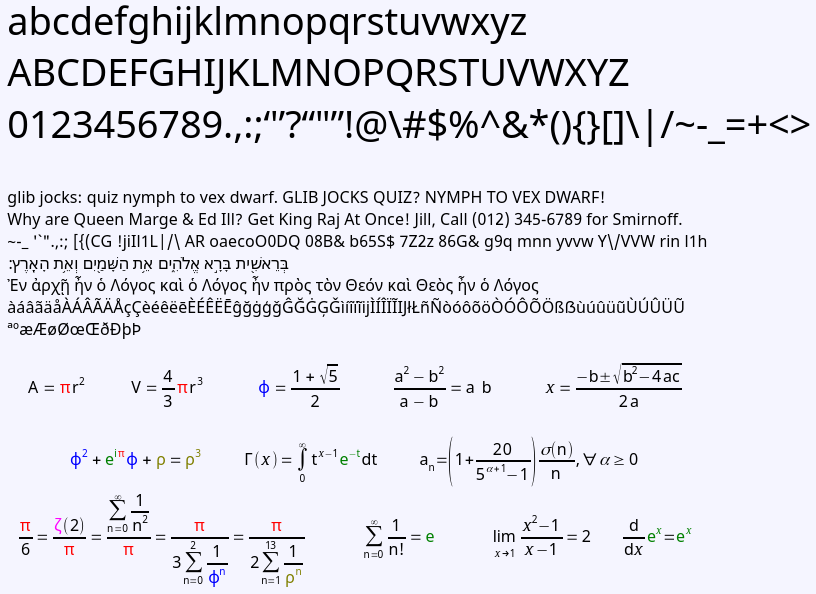
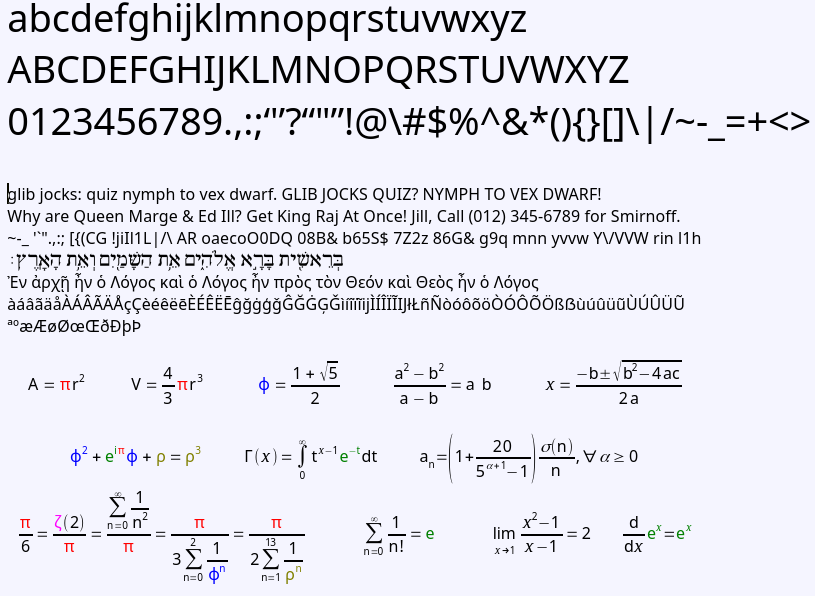
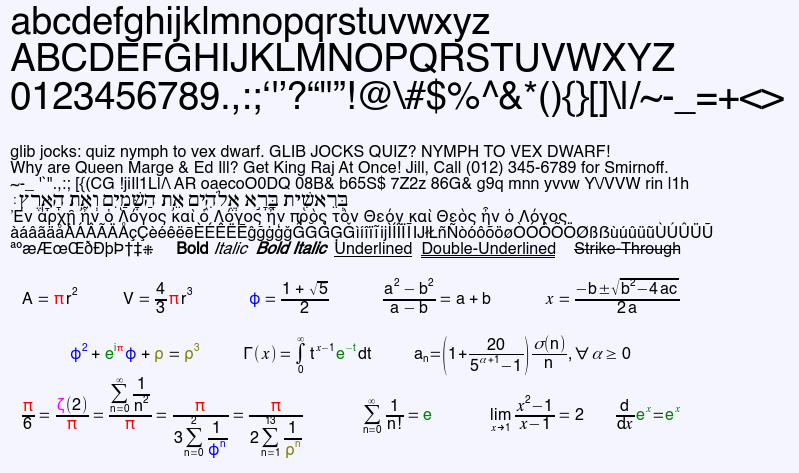
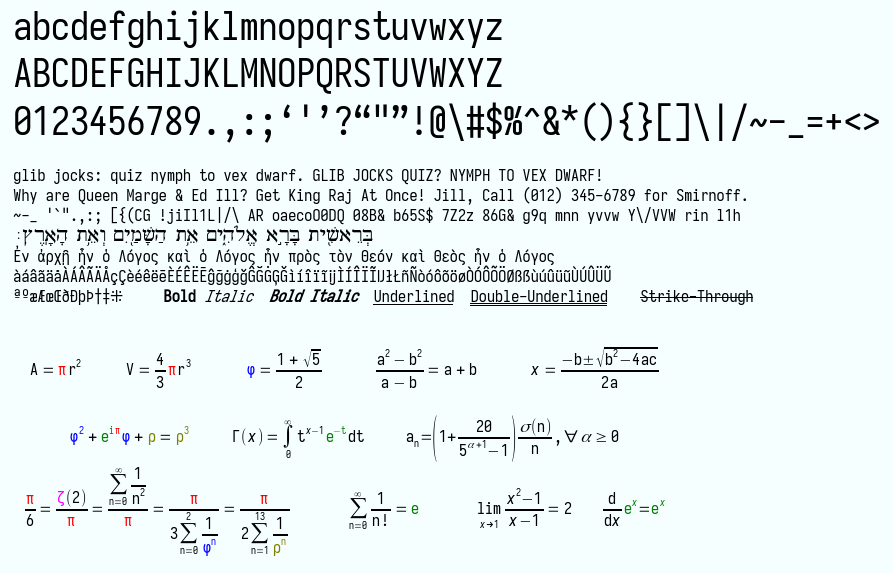
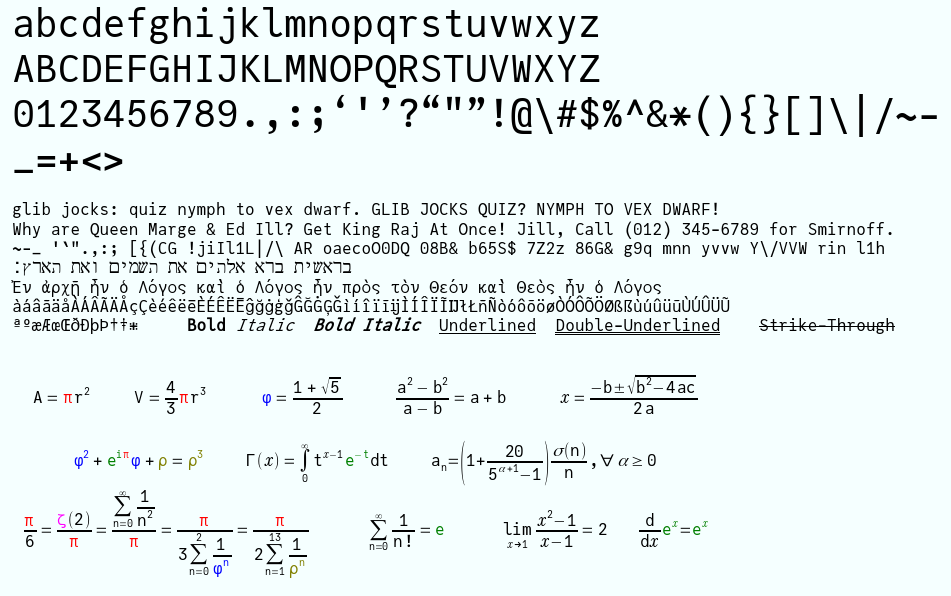
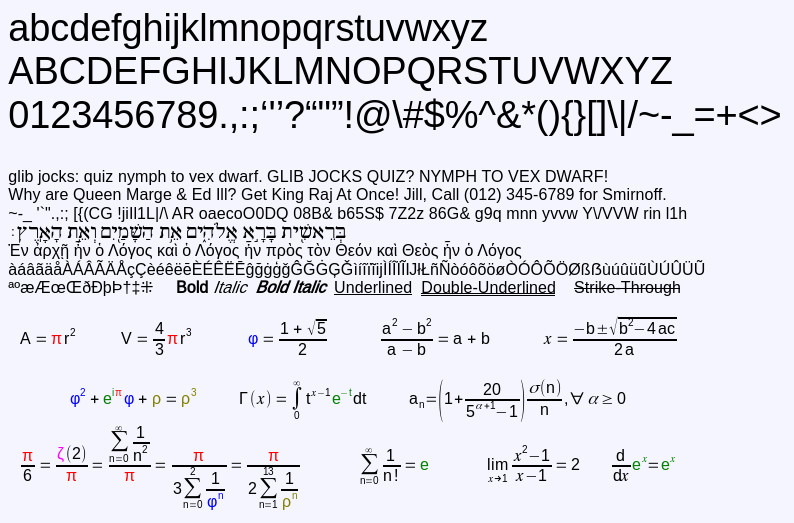
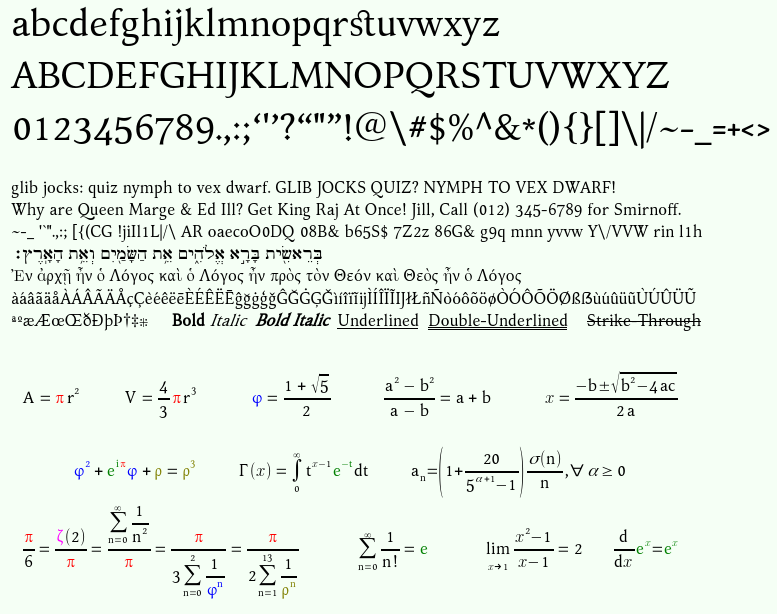
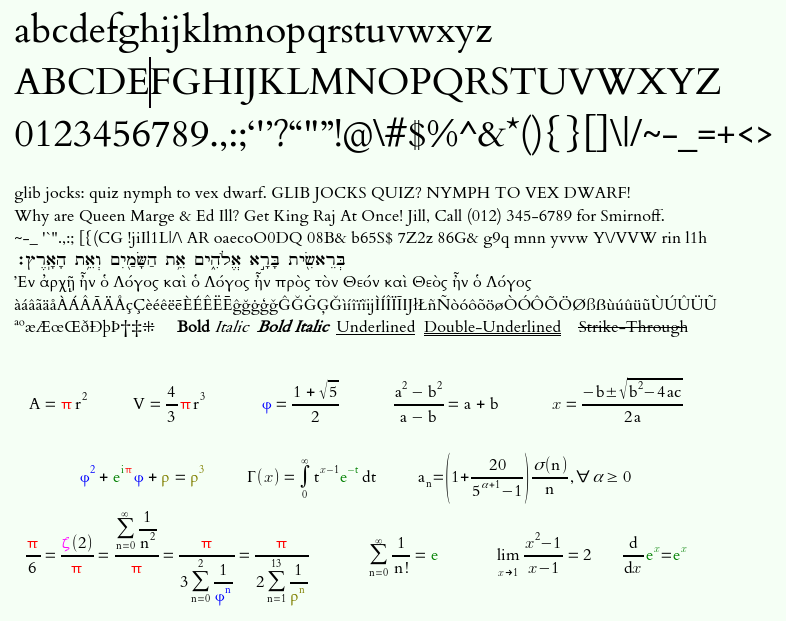
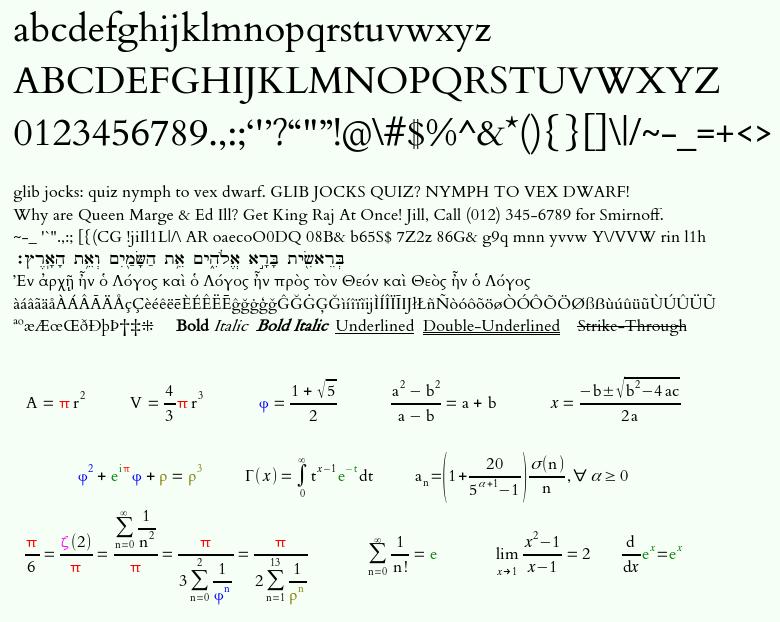



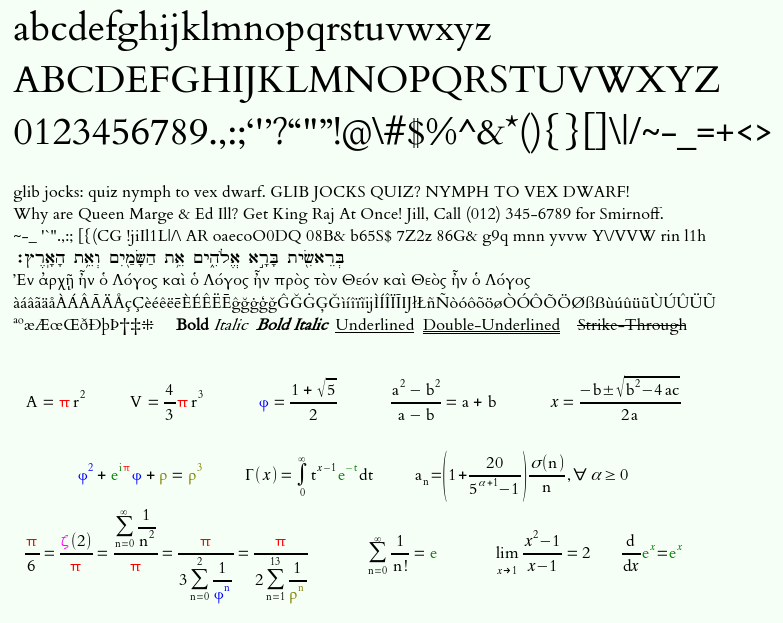
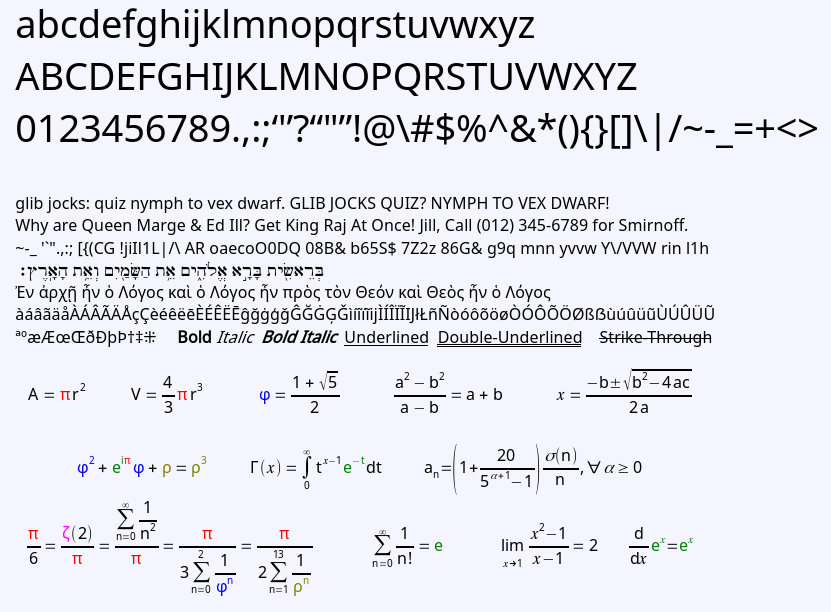
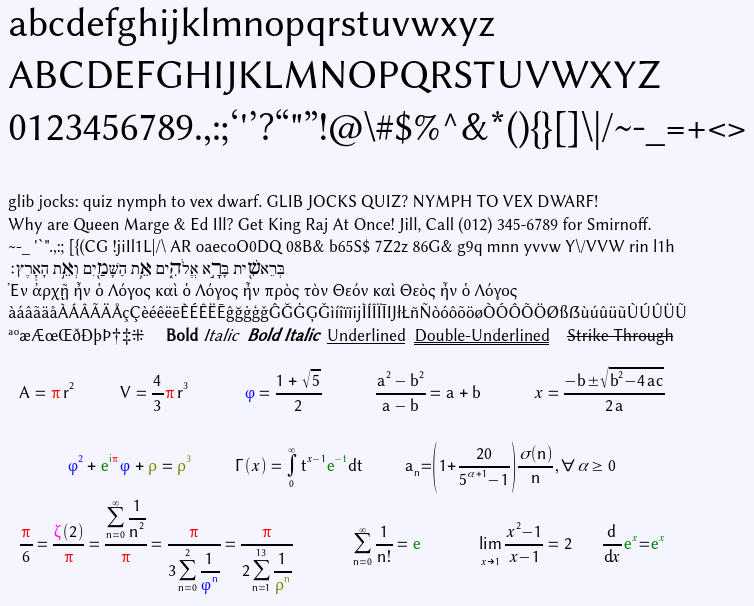
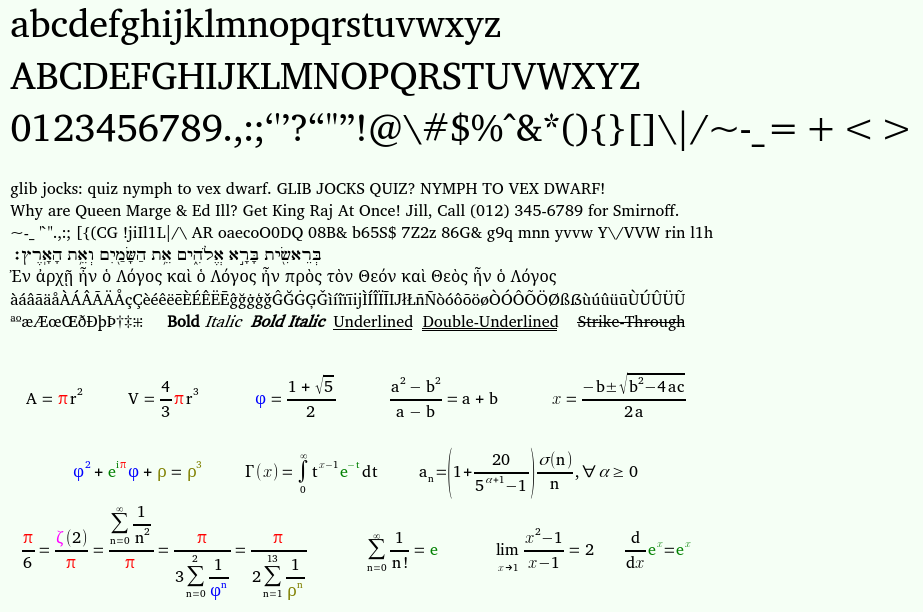
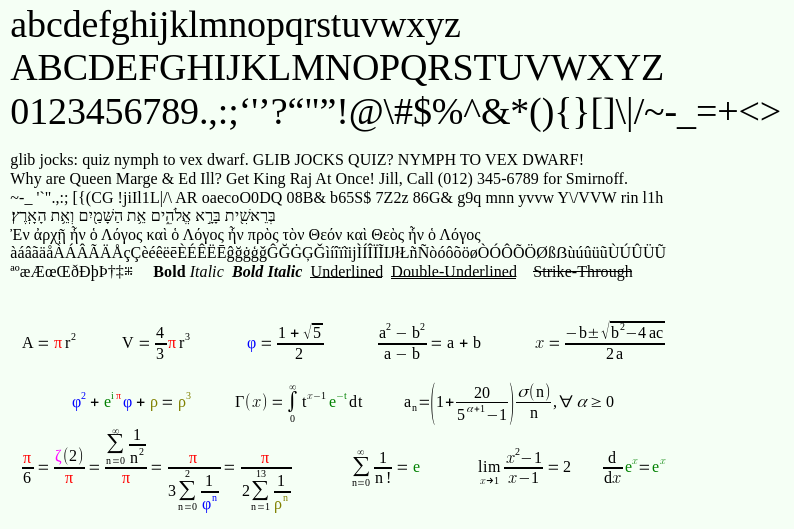
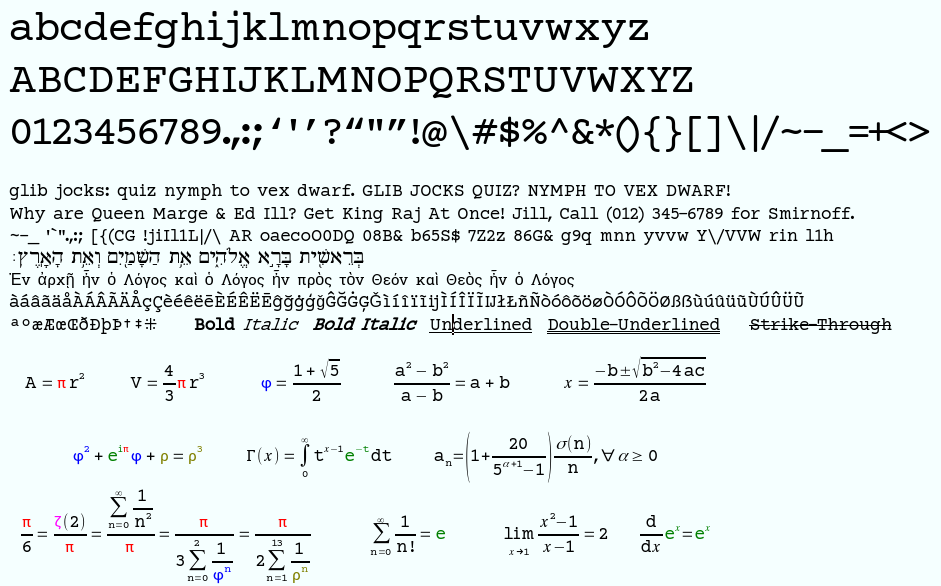
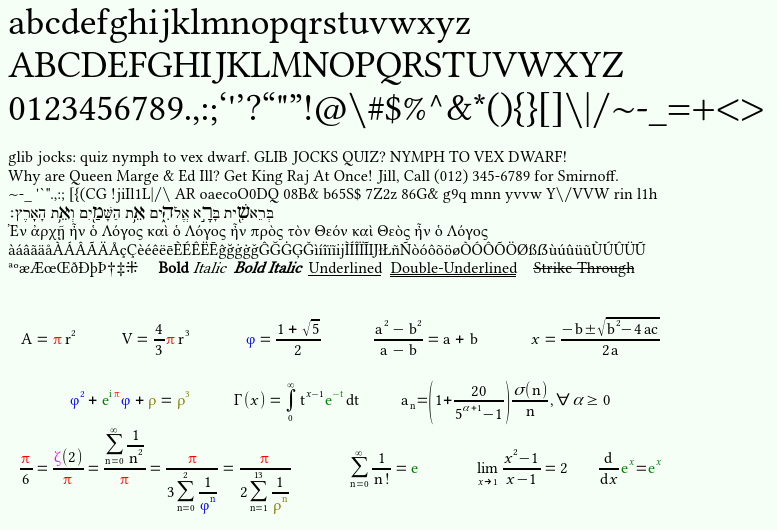
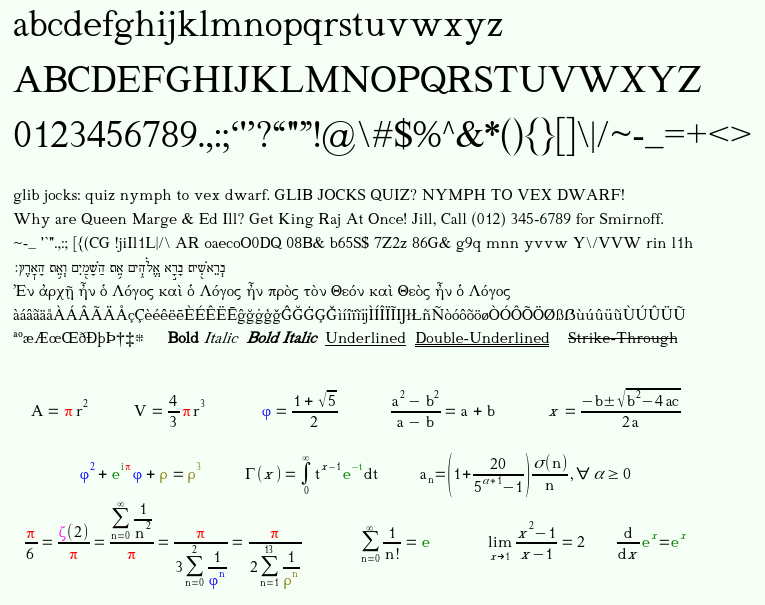
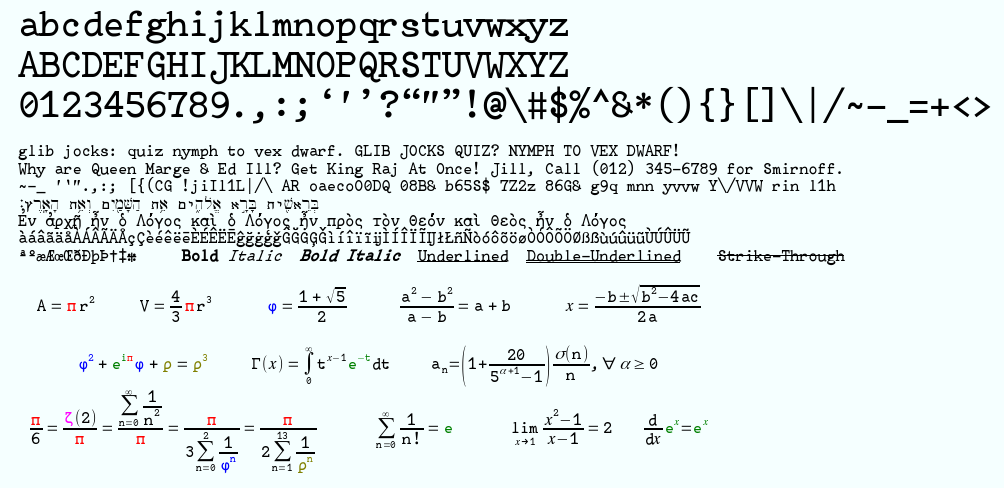
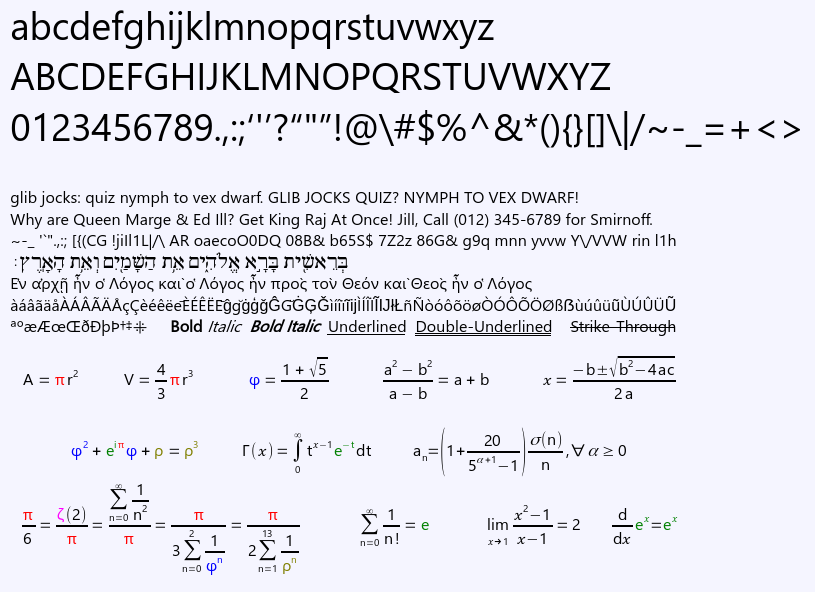
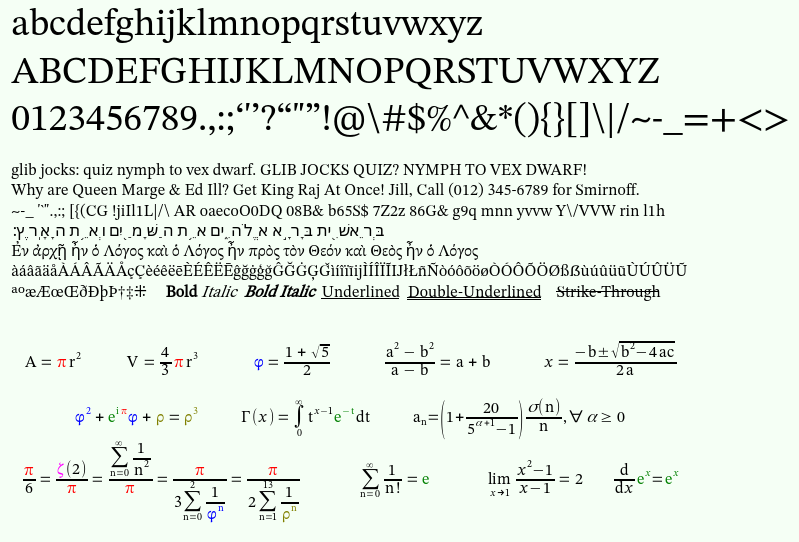
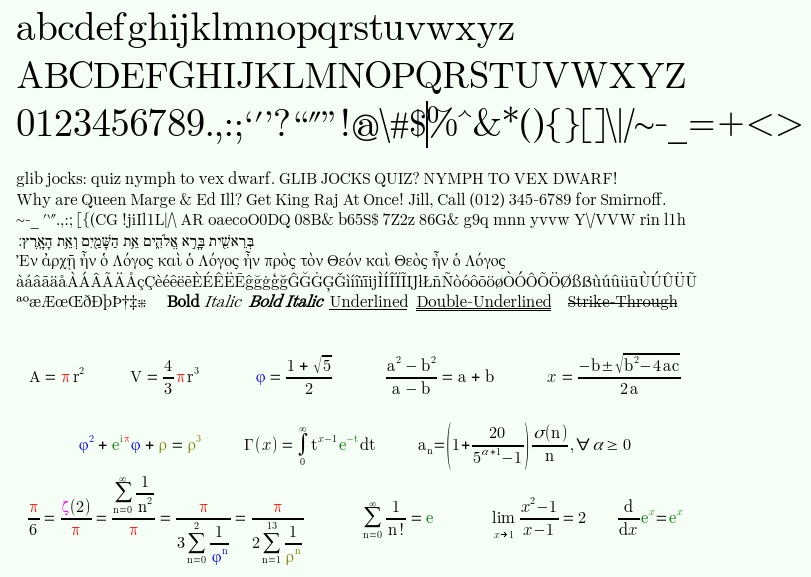
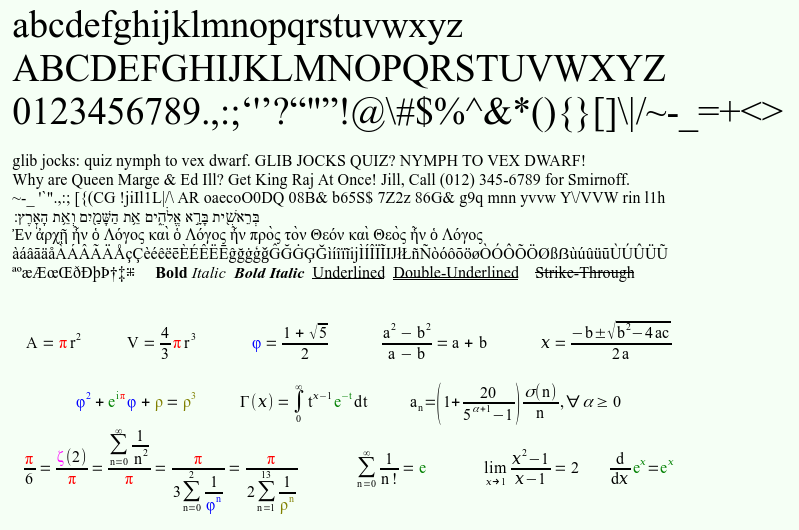
The table excludes U+058B, U+058C, U+169E, U+2065, U+208F, U+4E2D, U+A8FB, U+FB10, U+FB11, U+FB12, and U+FFFF codepoints, any blocks not present in any of the fonts, and the following blocks which are in some of the fonts:
Select fonts (maximum 12) to compare. You probably don't want more than 5 or 7 at a time. Trust me.
| Serif | Sans serif | Mono / semi-Mono |
The table below is supposed to render using Symbola font, your browser may substitute different glyphs as needed..